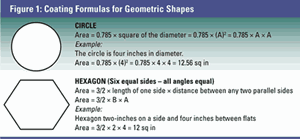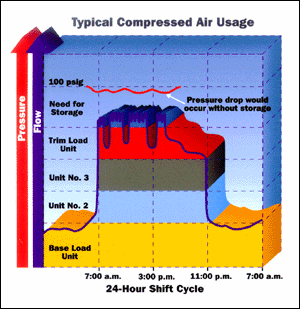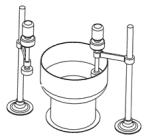Simplifying Pretreatment
Single-step process saves energy, time, disposal costs
#energy
Another Inconvenient Truth
Our broad editorial focus this month is on energy savings, a topic that should be of importance to pretty much all finishers as we slog through another winter here in the northern hemisphere.
#energy
Three Steps to Lower Energy Use
Improve paint system bottom line by cutting energy consumption
#basics #curing #energy
Selective Smut On Sealed Parts
Question:
We are producing anodized, electrolytically colored aluminum solar panels.
#energy
Paint Line Energy Reductions
What can we do to reduce the amount of energy used in our paint line?
#energy
Vanadate Conversion Coatings: Alternative to Phosphate?
Emerging pretreatment technology can reduce energy consumption and environmental concerns.
#energy #sustainability
SFIC Washington Forum Draws Finishers, Suppliers from Across the Nation
OSHA's proposed chrome PEL, energy costs among the topics on attendees' minds…
#energy
In Control
For many plants and job shops, the emergence of process control systems have accounted for hundreds of thousands of dollars in savings in chemical and energy use. Here's a look at one success story...
#energy
Estimating Finishing Costs
One of the keys to running a successful job shop lies in the ability to accurately assess the costs associated with finishing. Doing so requires that owners and managers examine a variety of factors, including labor, coatings, energy consumption, maintenance and others...
#energy
Thermal Energy Deburring Heats Up
The Thermal Energy Method (TEM) for deburring removes thin metal projections (burrs, flash) from manufactured workpieces by using the energy released when combusting fuel gas and oxygen to burn away the undesirable metal. This technology has been in commercial practice since the late 1960s and while still considered a non-traditional finishing process, it has attained wide acceptance in certain industries…
#energy
Industrial Assessments for Pollution Prevention and Energy Efficiency
Is it going to cost your company money to become more environmentally friendly and energy efficient? Some think it will. This executive summary and the associated report show that pollution prevention and energy efficient operations may actually save you money. A link to the full report is provided…
#energy
Aqueous Cleaning Basics
Four factors affect the cleaning process: chemistry; temperature; energy; and time. The various combinations determine how clean your part will be. This article reviews the basics of each type of cleaning to help you determine what will work best for you...
#energy #basics
Reducing Compressed Air Costs
Users of compressed air can improve energy efficiency, start and stop motors repeatedly and reduce maintenance costs and noise levels with rotary screw compressors incorporating variable frequency drives…
#energy
Low-Cure High-Solids Coating
With the country on the verge of another energy crisis, now is the time to explore the possibility of using low-cure, high-solids coatings...
#energy
Basics of High-Energy Mass Finishing
New rules for a new manufacturing millennium...
#basics #energy
Regenerative Thermal Oxidation at a Job Shop
By-passing the ceramic heat transfer beds provides for high energy efficiency, flexibility and long service life...
#energy #pollution control #workforce development











